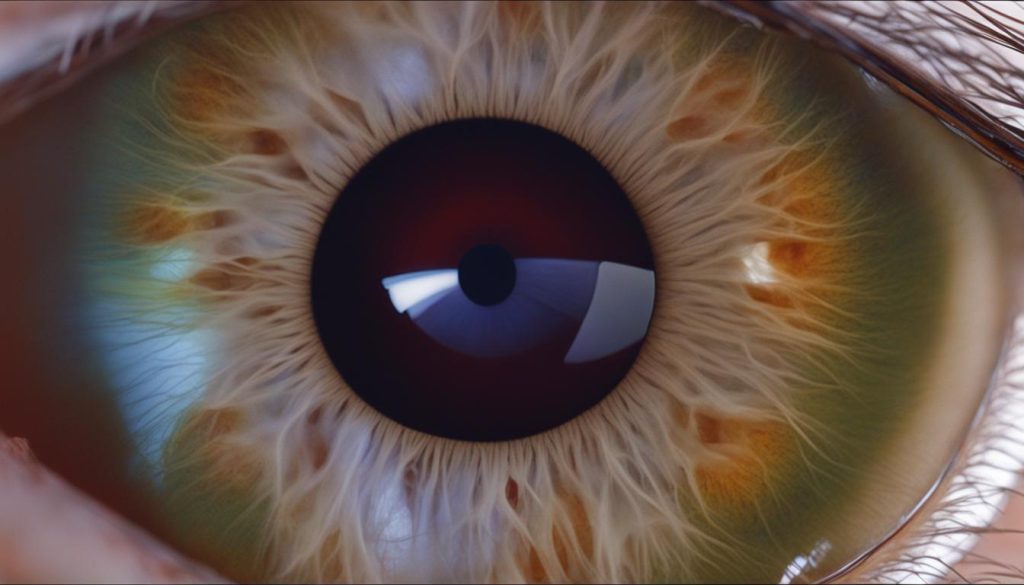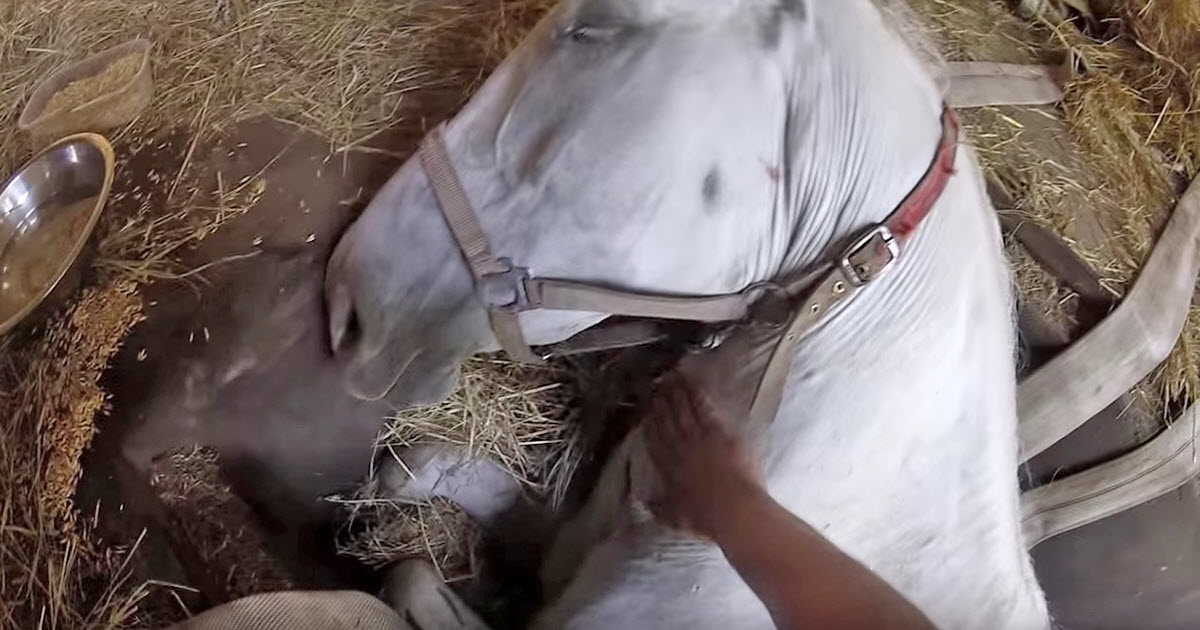Hello, I am here to shed some light on a popular question: can rabbits see in the dark? Many people believe that these furry creatures have exceptional night vision capabilities. Today, let’s delve into the world of rabbit vision and uncover the truth.
Contrary to what some might think, rabbits do not possess the same binocular vision as humans. They actually have monocular vision, which means their visual perception differs from ours. Additionally, their limited color receptors hinder their ability to perceive colors like we do. And while some animals, like reptiles, can see in infrared, rabbits cannot.
However, rabbits do have their own set of extraordinary vision traits. Their farsightedness is particularly impressive, allowing them to spot potential threats from afar. Their night vision is also highly developed, enabling them to navigate in low-light conditions. Their field of vision is wider than ours, and intermittent blinking helps them adapt to their natural surroundings.
Can Rabbits See in the Dark? Yes, they can, but not that well.
- Rabbits have monocular vision, not binocular vision like humans.
- Rabbits have limited color perception compared to humans.
- Rabbits excel in farsightedness and have impressive night vision capabilities.
- Rabbits have a wider field of vision and adapt to their environment through blinking behavior.
- Rabbits’ vision features strengths and limitations, contributing to their survival in the wild.
The Vision of Rabbits: A Closer Look
When it comes to their vision, rabbits have some unique characteristics that set them apart from humans. Unlike us, rabbits possess monocular vision instead of binocular vision. This means that their eyes work independently, allowing them to perceive their surroundings differently.
Rabbits also have a few advantages when it comes to their visual capabilities. They have excellent farsightedness, which enables them to spot potential threats from a distance. This adaptation is crucial for their survival in the wild.
In addition, rabbits have better night vision compared to humans. While we rely on well-lit environments to see clearly, rabbits can navigate in low light conditions thanks to their specialized eyes. Their eyes are more sensitive to light, allowing them to make the most of the available ambient light at night.
One remarkable feature of rabbit vision is their wide field of vision. Rabbits can see in a 360-degree range, with only small blind spots directly behind and in front of them. This wide field of vision helps them detect potential threats from various angles and improves their overall situational awareness in their environment.
Color Perception and Limitations
Although rabbits have some advantages in their vision, their color perception is limited compared to humans. They only have two color receptors, which restricts their ability to see a full range of colors. However, they can still recognize and differentiate some colors to some extent, despite this limitation.
It is also interesting to note that rabbits cannot see infrared light like some other animals. Their vision is predominantly restricted to the visible light spectrum. While humans can’t see infrared either, some other animals, such as snakes, have this unique ability.
Finally, rabbits’ blinking behavior is different from ours. They blink less frequently, approximately every five minutes, due to an additional eyelid that keeps their eyes lubricated for longer periods. This behavior helps protect their eyes from dust and other particles in their natural habitats.
Understanding Rabbit Eye Anatomy
In terms of rabbit eye anatomy, their eyes are positioned on the sides of their head, allowing for a larger visual field. This adaptation enables them to detect predators or potential threats from various angles.
Additionally, rabbits have a higher number of rod cells in their retina, which contributes to their better night vision compared to humans.
However, their ability to perceive color is less developed, as they possess only two types of color receptors. This limits their color discrimination abilities and makes their perception of color less versatile than that of humans.

Advantages of Rabbit Eyesight
Rabbits have unique visual capabilities that provide them with several advantages in their natural environment. One of the main advantages is their wide field of vision, which allows them to have a comprehensive awareness of their surroundings. With only small blind spots directly in front of and behind them, rabbits can effectively detect potential threats from all angles.
Another advantage of rabbit eyesight is their excellent farsightedness. This enables them to spot approaching dangers from a distance, giving them more time to react and escape. Their ability to navigate and survive in their environment is greatly enhanced by this exceptional farsightedness.
Additionally, rabbits have superior night vision compared to humans. This is due to the presence of rod photoreceptors in their eyes, which enable them to see in low light conditions. The adaptation of these photoreceptors allows rabbits to perceive their surroundings even during nighttime, making them well-equipped for nocturnal activities.
The wide vision range of rabbits is also a significant advantage. With a 360-degree field of view, rabbits can detect potential threats not only from the ground but also from above, ensuring their overall safety. This wide vision range enables them to monitor their environment and react quickly to any potential dangers.
Rabbit eyesight offers several advantages, including wide field of vision, excellent farsightedness, and superior night vision. These adaptations allow rabbits to effectively detect potential threats, navigate their environment, and ensure their survival.
The Limitations of Rabbit Vision
While rabbits possess remarkable visual capabilities, their vision does have certain limitations that set them apart from humans.
Color Perception: Rabbits have only two color receptors, limiting their ability to identify and differentiate colors to some extent. Unlike humans who have three color receptors, rabbits perceive a more limited color spectrum.
Blind Spots: Rabbits have small blind spots directly behind and in front of them. These blind spots can affect their ability to detect objects in close proximity, making close-range object detection a challenge for them.
Despite these limitations, rabbit eyesight provides them with distinct advantages in their natural environment. While they may have restricted color perception and blind spots, their wide field of vision, excellent farsightedness, and superior night vision allow them to detect potential threats and navigate their surroundings effectively.
Myths and Facts About Rabbit Night Vision
When it comes to rabbit night vision, there are several misconceptions that need to be cleared up. Let’s take a closer look at some common myths and facts about how rabbits see in low light conditions.
Blinking patterns: Unlike humans who blink more frequently, rabbits have a unique blinking behavior. On average, they blink every five minutes, which is less frequent than humans. This reduced blinking frequency is attributed to an additional eyelid that keeps their eyes lubricated for longer periods. This adaptation is advantageous for rabbits as it helps them avoid predators and stay alert in their environment.
Comparison with other animals: While rabbits do have better night vision than humans, their night vision is not as advanced as that of cats. Cats possess a specialized structure in their eyes called the tapetum lucidum, which enhances their ability to see in the dark. This gives cats a significant advantage in low light conditions compared to rabbits.
Adaptation to low light conditions: Despite not having the same level of night vision as cats, rabbits have evolved to adapt to low light conditions. Their vision works best in restricted light, such as at sunrise and sunset. Rabbits have a greater number of rod photoreceptors in their eyes, which are highly sensitive to light. This adaptation allows them to perceive their surroundings even in dimly lit environments, giving them a distinct advantage in foraging and detecting potential threats during the night.
By dispelling these myths and understanding the true capabilities of rabbit night vision, we can gain a better appreciation for how these animals adapt to their natural habitat.
Answering Common Questions About Rabbit Vision
Can rabbits see in complete darkness? No, rabbits cannot see in complete darkness. However, they have better night vision than humans. They rely on their rod photoreceptors to navigate in restricted light conditions, allowing them to move confidently in dimly lit environments.
Do rabbits have better peripheral vision than humans? Absolutely. Rabbits possess exceptional peripheral vision, surpassing that of humans. Their eyes are positioned on the sides of their head, providing them with a wider field of vision. This adaptation, combined with their 360-degree visual range and minimal blind spots, allows them to detect potential threats from various angles.
How do rabbits perceive depth and distance? Unlike predators like cats, which have binocular vision for accurate depth perception, rabbits have monocular vision. This means their depth perception abilities are not as precise as those of humans and predators. However, their excellent farsightedness compensates for this limitation, allowing them to spot approaching dangers and navigate their environment effectively.
Can rabbits see ultraviolet light? No, rabbits cannot see ultraviolet (UV) light. Their visual spectrum is limited to the range of light visible to humans.
Do rabbits have a higher sensitivity to motion compared to humans? Yes, rabbits have a higher sensitivity to motion than humans. Their eyes are finely tuned to detect even the slightest movement in their surroundings. This heightened sensitivity, along with their excellent farsightedness, enables rabbits to quickly spot approaching dangers and take evasive action when necessary.
Altitude: Illustration of Rabbit Vision

Conclusion
Rabbits possess a fascinating and unique vision that sets them apart from humans. While they have monocular vision and limited color perception, their optical capabilities are remarkable in other aspects. Rabbits excel in farsightedness, allowing them to spot potential threats from a distance, while their better night vision enables them to navigate in low light conditions.
One of the key advantages of rabbit vision is their wide field of vision, providing them with a 360-degree range to monitor their surroundings. Although they have small blind spots directly behind and in front of them, their overall visual perception is highly adapted to their natural environment.
In terms of color perception, rabbits possess two color receptors, enabling them to recognize and differentiate colors to some extent. This adaptation, combined with their other optical capabilities, enhances their ability to detect predators and avoid danger.
All in all, rabbit vision showcases their nocturnal adaptation and optical strengths. Their unique combination of monocular vision, farsightedness, wide field of vision, and limited color perception makes them well-equipped for survival in their natural habitat.
FAQ
Can rabbits see in the dark?
Rabbits have better night vision than humans and can see in low light conditions. However, they cannot see in complete darkness.
What is the vision of rabbits like?
Rabbits have monocular vision, excellent farsightedness, and a wider field of vision compared to humans.
How well can rabbits see in the dark?
Rabbits have better night vision than humans, thanks to their higher number of rod cells in their retina. They can navigate in restricted light conditions.
Do rabbits have color perception?
Rabbits have limited color perception due to their two color receptors. While they can recognize and differentiate colors to some extent, their color discrimination abilities are not as well-developed as those of humans.
Do rabbits need light to see?
While rabbits have better night vision than humans, they still rely on minimal light to see. They excel in low-light conditions but cannot see in complete darkness.
Can bunnies see in the dark?
Bunnies, like adult rabbits, have better night vision than humans. They can navigate in low light conditions and have a wider field of vision.
How does rabbit eye anatomy contribute to their vision?
Rabbit eyes are positioned on the sides of their head, allowing for a larger visual field. They have a higher number of rod cells in their retina, which enhances their night vision capabilities.
What are the advantages of rabbit eyesight?
Rabbits have a wider field of vision, better night vision, and excellent farsightedness. These adaptations help them detect potential threats and navigate their environment.
What are the limitations of rabbit vision?
Rabbits have limited color perception and small blind spots directly in front of and behind them, which can affect their ability to detect objects in close proximity.
Do rabbits blink differently than humans?
Yes, rabbits have a unique blinking behavior. They blink less frequently than humans, approximately every five minutes, due to an additional eyelid that keeps their eyes lubricated for longer periods.
Can rabbits see in complete darkness?
No, rabbits cannot see in complete darkness. They have better night vision than humans but still require minimal light to navigate their surroundings.
Do rabbits have better peripheral vision than humans?
Yes, rabbits have exceptional peripheral vision. Their wide field of vision allows them to have a 360-degree range, with only small blind spots directly behind and in front of them.
How do rabbits perceive depth and distance?
Rabbits have monocular vision, limiting their depth perception abilities compared to humans and predators with binocular vision.
Can rabbits see ultraviolet light?
No, rabbits cannot see ultraviolet light.
Do rabbits have a higher sensitivity to motion compared to humans?
Yes, rabbits have a higher sensitivity to motion compared to humans. Their excellent farsightedness allows them to spot approaching dangers and aid in predator avoidance.






